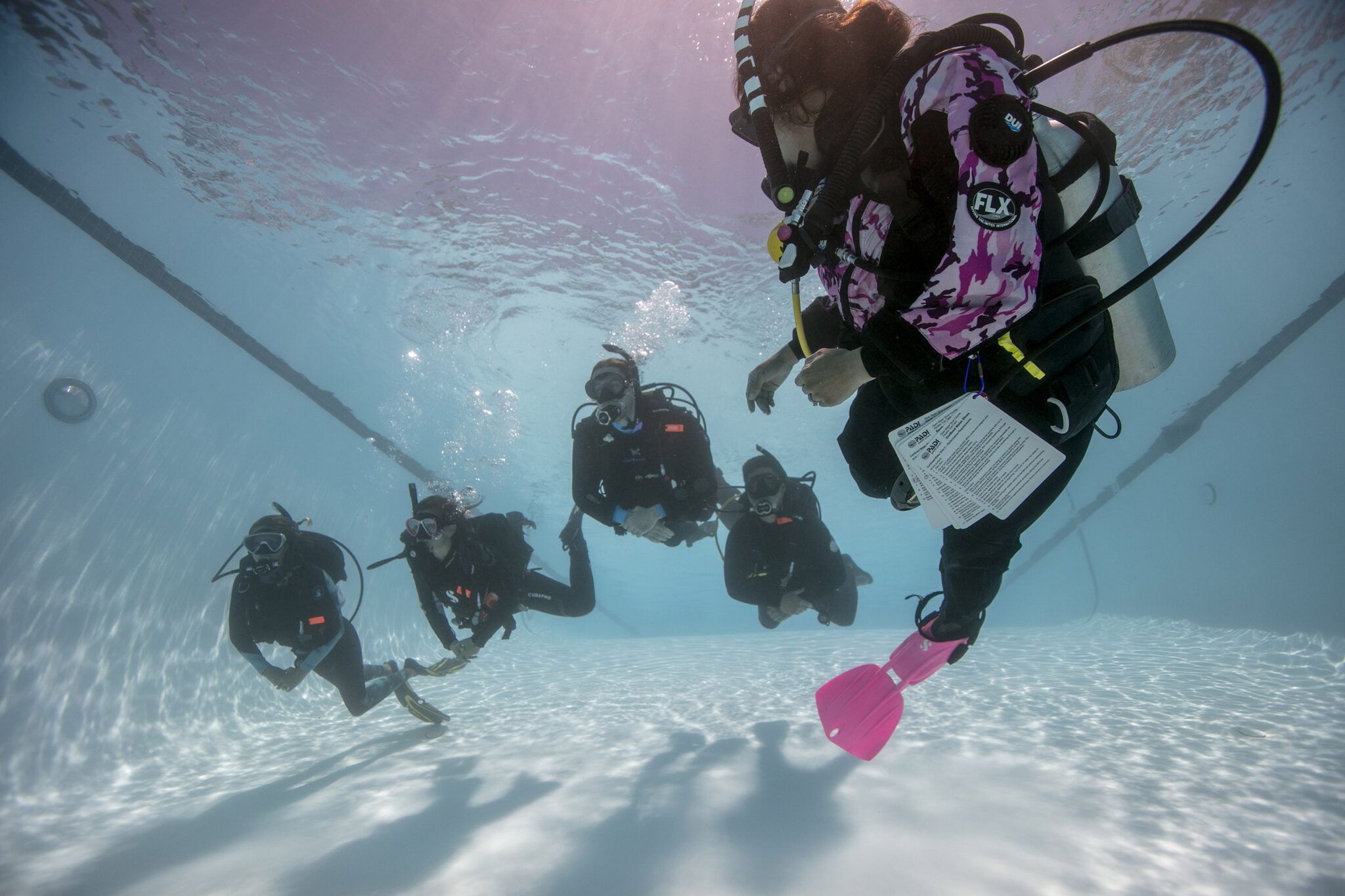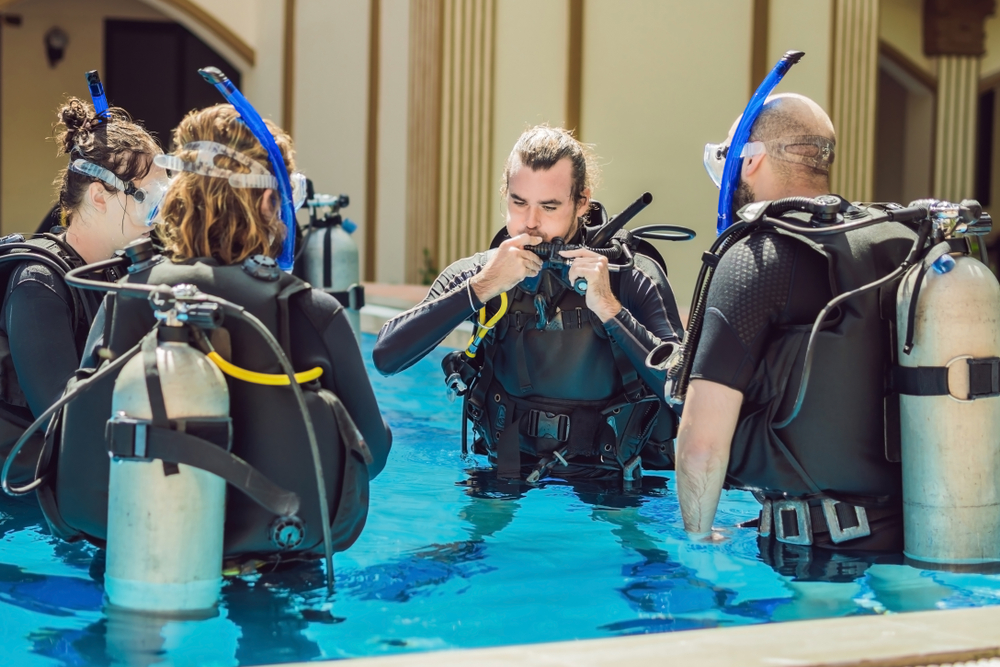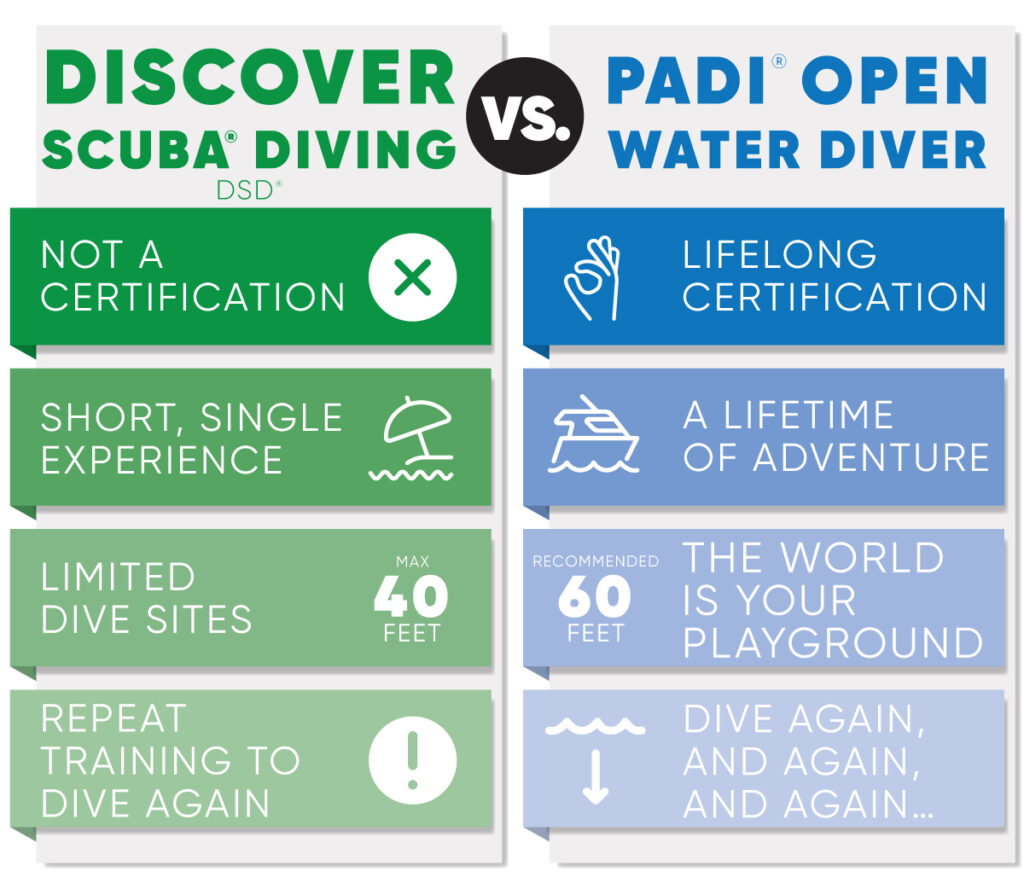If you want to try scuba diving but aren’t ready to commit to a certification course, you have a few options: a PADI® Discover Scuba Diving® experience (also known as a DSD®) and…other programs.
Other programs have names like “try dive” and “resort course,” but these aren’t necessarily the same as a PADI Discover Scuba Diving experience. Make sure you know what you’re signing up for. There is no such thing as a “PADI try dive” or “PADI resort dive certification.”
You might be thinking, “If the dive shop has good reviews, but they don’t specifically offer PADI Discover Scuba Diving, does it really matter?” Yes, it does.

Have you ever bought something online that had good reviews that turned out to be not-so-great? I did.
This is kind of embarrassing, but I bought an off-brand, sunlight therapy lamp, and it gave me a sunburn on half of my face. My friend recommended a HappyLight brand therapy lamp, but did I get that? No, I did not. I chose something that had good reviews but cost less and ended up damaging my body.
I’m not saying PADI Discover Scuba Diving experiences cost more; sometimes they do and sometimes they don’t. The point is, when you’re buying something that can affect your physical well-being, get the real deal. Don’t choose the off-brand thing that is like the thing you want.
PADI’s Discover Scuba Diving experience (DSD) is an established program for people who want to try scuba diving without investing in a full scuba certification course. It’s a great option if you’re not sure whether you’ll like scuba diving.
Discover Scuba is sometimes referred to as a “try dive,” or “discovery dive,” because, let’s face it, “the PADI Discover Scuba Diving experience” is a bit of a mouthful. Before you register, just confirm that you’re enrolling in a PADI Discover Scuba Diving program and not Megan’s Magical Underwater Mystery Tour.

The PADI Discover Scuba Diving experience is designed for people with no scuba diving experience. You’ll take your first breaths underwater, play around and have fun without taking any unnecessary risks.
For example, your Discover Scuba Diving leader is not allowed to have more than eight participants in the pool and four in open water, unless they are assisted by another instructor or qualified dive leader. There are also depth limits:
6 meters/20 feet for the initial pool session with access to shallow water you can stand up in for the first part 12 meters/40 feet for the optional open water diveAnother important difference: you can apply your Discover Scuba experience toward a PADI Open Water Diver certification. Be sure to tell your instructor if you’re interested in this option before you start your in-water training.
Before getting in the water, you’ll learn about the equipment you’ll use, some underwater hand signals and other scuba diving fundamentals. You can do this before you arrive (ask your instructor about PADI Discover Scuba Diving eLearning™) or at the dive shop.
Next, a PADI Pro will help you put on scuba gear and ensure it fits properly. In shallow water, you’ll learn how to:
If you’re interested in
